Becoming stewards of our forest
For some of us, here in the California foothills, especially those who live near the national forest, nature provides the perfect landscaping. Using the existing trees and native plants can help your garden design blend smoothly into the surrounding landscape. Caring for a large forest property has its challenges and rewards.
The garden plan here was begun well before the house was completed. Emphasis was on grooming the native landscape to make it more hospitable to its new residents (us!). I decided early on that I loved the deer and other wildlife much more than I was attached to any cultivated plants I might add. This philosophy guided me when decisions had to be made and wonderful exotic plants wanted to come home with me on visits to the local nursery.
The Existing Landscape
Oaks and Pines
Trees were protected by not allowing heavy equipment to work near their root zones. (Note: Recently a homeowner lost over 50 full grown pines on a very visible edge of the nearby lake because bulldozers trampled and compressed the roots during home construction.) For fire safety, we trimmed trees ten feet up and ten feet around and at the same time revealed the view down the property bit by bit.
Dead branches were trimmed from the larger manzanitas, revealing their dark red sinewy trunks, and weedy areas underneath all the trees were eventually cleared away. Larger branches, trimmed from the trees served as planting bed edgings, both inexpensive and rustic. Later, logs were used as steps going down the steeper slopes.
Meadows
Some open areas were designated as ‘meadows’ and left to grow their natural grasses and wildflowers. Some weedy Yerba Santa plants, Eriodictyon crassifolium and thistles, Cirsium occidentale var. californicum, were trimmed to the ground, causing them to grow back busier and with more flowers. The poison oak, Toxicodendron diversilobum , was sprayed every year, but needs control indefinitely. These meadow areas, green in winter and spring, turn soft gold in summer, giving a look of ‘wide open spaces’ beyond the cultivated areas of the garden. More work needs to be done here in the meadows, to reduce tarweed where we walk, and eliminate the non native filaree, Erodium cicutarium, and bur clover, Medicago polymorpha.
Granite rocks
Huge mossy boulders were uncovered, as we groomed the trees and made visible as garden features, by trimming the branches up around them.
During the septic system construction, large rocks were unearthed and collected, and care was taken to dodge the back hoe to ‘save’ each one. These movable rocks were used as accents and as edgings for planting beds. We collect rocks for edgings and a rock garden.
Ground
The soil is varied and impressive here. There are distinct areas of leafy loam under the trees; there is clay, especially in places where the construction scraped away the topsoil; sand in the natural drainage slopes, and decomposed granite around the rocky places.
It’s good to become familiar with all these types and get to know how to mix them for a planting bed. Thick clay needs organic matter added to make it plant friendly.
The tractor helped immensely to move sand to mix with clay and topsoil from forested edges of the property to replace the compacted ground near the house where most of the construction debris left devastation. Loads of mulch continue to be added every year and free mulch is truly a treasure trove that both I and my husband scout out.
Burn piles
We are city kids, did I mention? We learned how to do burn piles, from our fireman friends, burning large piles each rainy season. You need to know where… how far from trees; you have to have water nearby and rakes and shovels. You learn not to lay your good jacket down where the embers can reach it; else you pick it up to find tiny holes burned in it.
There is a number to call (in Madera Co. (877) 429-2876) to indicate if it is a ‘burn day’, or you’ll just notice thin lines of smoke rising from residential areas across the valley and call to confirm. I have learned how to use the scorched ground to the garden’s benefit.
In an old book found online, I learned that if you dig down under the soil where a burn pile was done, the soil is very much like potting soil and can be used in planter and to enrich planting beds.
Colors of the forest
The colors of this natural ‘garden’ are subdued, soft greens and grey-greens and golds. Tree trunks are grey, grayish-brown or reddish-brown. Ponderosa pines add that luscious deep green that contrasts so beautifully against the blue, blue sky. The oaks take getting used to for me, with their stickery leaves and rough bark. I have come to admire their strength against the wind and their age, which calls attention to the fact that they were here first. This is their world and we respect their needs of low water and space plantings well away from their roots, 10 feet away. After thinking about it for a seemingly interminable time, we chose the color of the tree bark for our house color, a grayish-brown.
Learning about and working on our property has been so rewarding and given us much joy, ever thankful for all this natural beauty and instilling in us the inspiration to be stewards of the land, leaving harmony and perfect balance to those who come after us here.
For a list of plants here before we came, see Existing Native Plants.

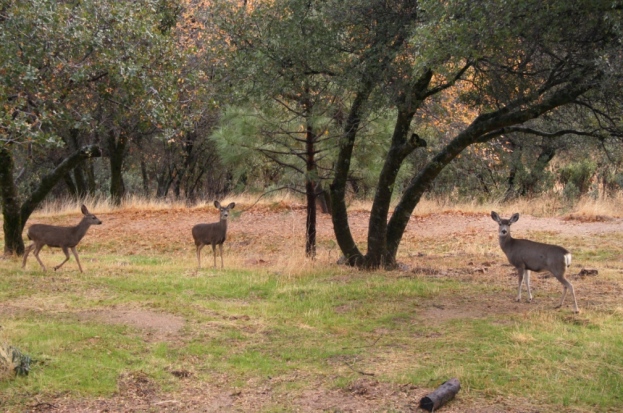
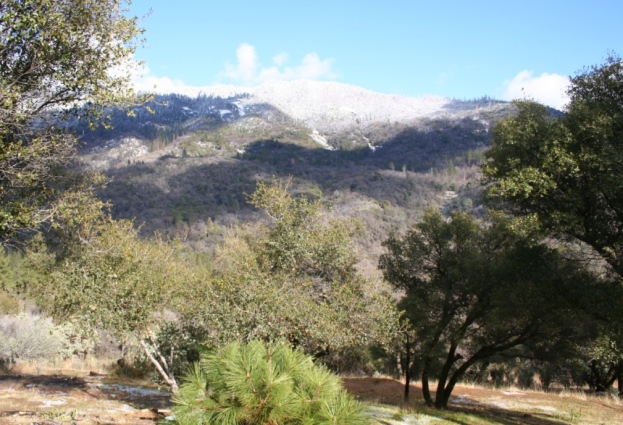
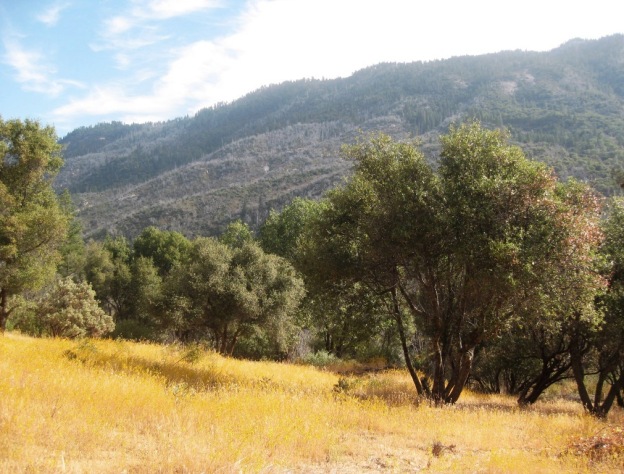
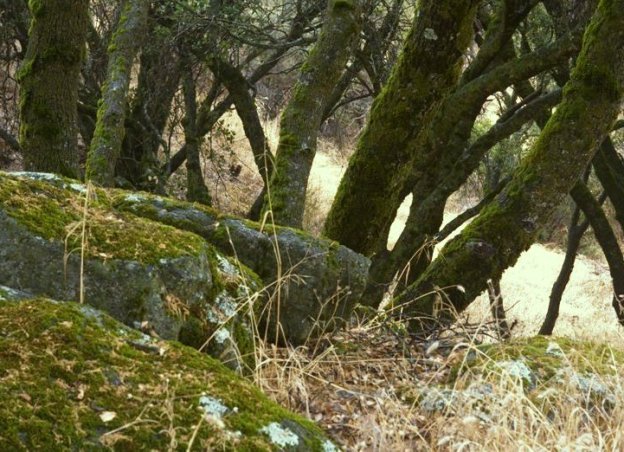


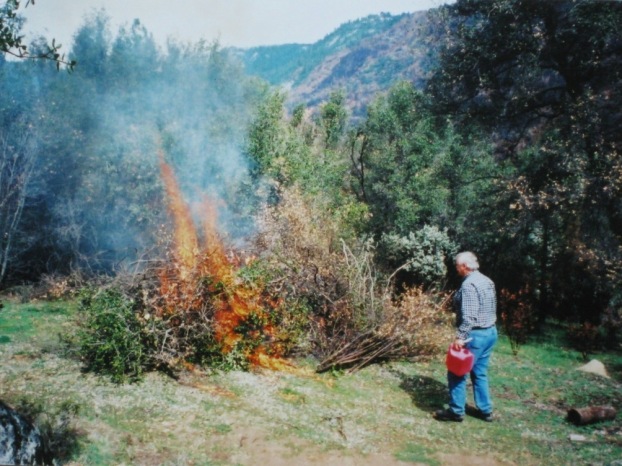
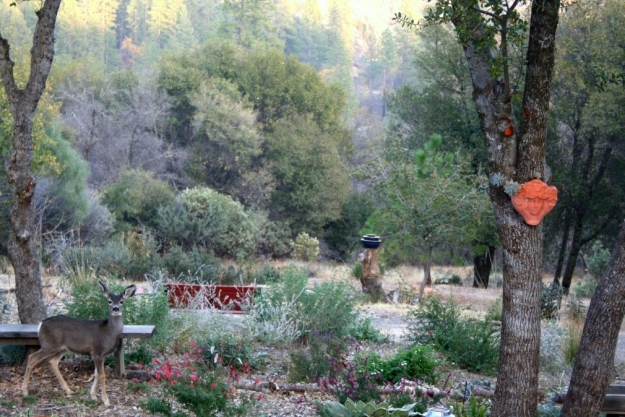
15 comments